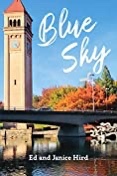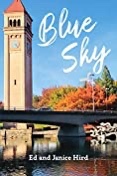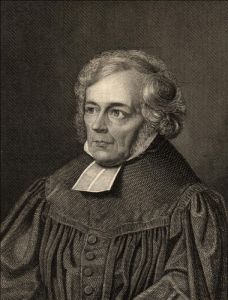http://www.sbwire.com/press-releases/a-response-to-anton-drake-from-reverend-ed-hird-252728.htm
A Response to Anton Drake from Reverend Ed Hird
Wednesday, May 15, 2013 23:50
(Before It’s News)
Hollywood, CA — Last week I wrote a press release to promote the new book Atheist Yoga by Anton Drake. As part of that press release, which can be foundhere, I conducted an interview with Mr. Drake, and one of the topics of discussion was a recent article by Reverend Ed Hird that centered on the idea that the practice of yoga is something unsuitable for Christians. Anton had read that particular article, and had several comments about it; Reverend Hird subsequently contacted me and requested a chance to offer a rebuttal, feeling that some of what he had said had been misconstrued.
Here is Reverend Hird’s response to the Atheist Yoga press release:
[ Having read Anton Drake’s new book ‘Atheist Yoga’, I am fascinated by the extent to which so many atheists are focused on a God that they ostensibly don’t even believe in; many of them seem to think more about God than most Christians do, and I can’t help thinking that it’s almost as if they are obsessed with this allegedly non-existent God. When I think of God, I see the face of Jesus. Anton is correct when he said “if someone is an atheist, they lack a belief in God.” This is undebatable. Many people don’t realize that Buddha, as a reformed Hindu, was an atheist who continued to do Hindu yoga; one of the most famous pictures of the Buddha shows him in the yogic lotus position. Buddhist usually call their yoga ‘meditation’, but a rose by any other name is still a rose. Buddhism was founded as an atheistic religion. In this sense Anton Drake is clearly right—there is no incompatibility between Anton being an atheist and doing yoga. Anton, like his fellow atheist Buddha, is clearly involved in a spiritual/religious practice.
In an interview released May 9th 2013, Mr. Drake made some comments about my article “Culture Wars: Yoga, More than Meets the Eye” that clearly demonstrate the extent to which he has completely misunderstood the meaning and intent of the article. In the interview, Anton stated that “although I am what you might call a dogmatic atheist, I find the reverend Hird’s ideas on this matter to be quite prejudicial, and even somewhat racial and xenophobic” While I enjoyed reading the interview, I find it unfortunate that Anton will dismiss someone as racist and xenophobic simply because they have reservations about syncretistically mixing two different religions. My hero E. Stanley Jones, who lived for 50 years as a Methodist missionary in India and wrote a book about Gandhi called ‘Portrait of a Friend,’ actually started the United Christian Ashram movement, of which I have served on the international board. My main point here is that I have always had great respect for the East Indian people, just as my friend Stanley Jones did.
In the same interview, which was titled “Ed Hird, Encinitas, and the Fear of Yoga, An Interview with Anton Drake Part 2,” Anton mentioned that “Many of the Hindu friends I’ve had through the years have actually kept a picture or a statue of Jesus on their altar or puja, right next to the other pictures of gurus and deities they revered. That always impressed me.” It is a good thing to show respect to other religious traditions; however, because Hinduism allegedly has 330 million gods, adding Jesus to the Hindu pantheon does not really respect the integrity of the Judeo-Christian heritage. To serve two masters, as Jesus cautioned against, is not showing true respect for other religious traditions. I do not question the prerogative of new-agers, atheists, or Hindus to practise yoga. I am asking for some transparency about what yoga really is about, particularly when they package it for Christians. Yoga is the very heart of Hinduism. Nine out of ten Hindus agree that yoga is Hinduism. Without yoga, there is no Hinduism. Without Hinduism, there is no yoga. Many Hindu gurus claim with no evidence that Jesus went to India and became a yoga teacher. They also hold that Jesus as a yogi was teaching reincarnation because he wanted us to be born again. Once again, this does not show respect or understanding for other important religious faiths.
Mr. Drake also seemed particularly offended by my comment that yoga ‘kills the mind’. This is merely quoting key yogis who see that as one of the key benefits of yoga. Christian meditation is about focusing on God’s Word thoughtfully rather than the elimination of thought. Sensory deprivation and sensory overload, both key aspects of advanced yoga, are proven techniques for the ‘killing of the mind’. Yoga does not require belief to alter the mind. It just requires intensive yogic practice. It is the technique that produces the effect. Yoga asanas appear to the uninitiated as if they are just stretching exercises. The more fully initiated realize that asanas are worship postures to Hindu deities. The Warrior asana, for example, is identified with the worship of Lord Virabhadra who has a thousand arms, three burning eyes, and a garland of skulls. The Cobra asana is about identification with and worship of the Kundalini snake, yogically awakened in the chakras. The yoga insiders all know the real scoop. They also know that North Americans are not quite ready yet for the full truth about the religious identity of yoga.
Further into the interview, Anton stated that “Although his [Rev. Hird’s ] article is fairly well written and seems to make some good points on the surface, if one looks a bit closer it reveals itself as absurdly, almost comically xenophobic; simply consider how easy it would be to apply the same arguments he uses to sushi, origami, or Asian forms of dance.” Among other things, I am particularly curious about Anton’s teaser comment “Good points on the surface.” I am hoping that in the future, Anton could perhaps elaborate on this. As for the xenophobic comment, this was clearly not one of Anton’s strongest arguments. To suggest that people who have reservations about yoga must also be against sushi, chai tea, and curry is comical. Anton, who has never met me, keeps saying that I am xenophobic simply because I dare to question yoga. I find Mr. Drake’s comments along this line to be unfortunate and even intolerant. I ask, is there still room within our Western democratic cultures to raise questions without being stereotyped or villified?
Anton Drake then goes on to say that schoolchildren should obviously be taught yoga: “Schoolchildren should obviously be allowed to learn yoga; restricting western children from learning yoga on the basis of religion is barbaric, and not just from an atheistic point of view.” The terms ‘should’ and ‘allowed’ go in two different directions. Public schools do not ‘allow’ religious practices, whether Hindu, Christian, Muslim, or New Age, to be mandated for the children. If yoga is in fact inherently religious, this would be violating the Encinita School Board’s own legal parameters. Is it really respectful to mandate yogic Hinduism for children attending the Public School system? What if this violates the faith perspective of the children’s parents? Should they be dismissed as barbaric, to use Mr. Drake’s words? At the core of democracy is the freedom of religion, and the freedom to question. No one will win if yoga ever becomes so culturally entrenched that our schools begin imposing it as part of their everyday curriculum, and thereby elevate it to the status of an unquestioned academic truth or authority.
Drake also says, and I quote, that “He [Rev. Hird] of course takes it completely for granted that any spiritual tradition outside of Christianity or western culture is intrinsically evil and antithetical to every form of goodness.” However, where he is wrong is that I am in no way a defender of Western culture as somehow superior to Eastern culture. I find much wisdom and value in all cultures, and in all religions. We need to be respectful to other religious traditions, especially when we do not understand them. I simply ask that Christians be not asked to compromise their religious identity in the midst of a well-packaged yoga marketing strategy. Yoga is a ten-billion dollar industry these days in North America, and we simply cannot overlook our core cultural principles in rushing to spread the indoctrination of yoga into our schools. While Anton Drake “the atheist” spoke a lot about demons and evil, you will notice that I did not, and this was not at all the focus of my article. I simply wish to affirm the Lordship of Jesus Christ in one’s life. And my contention is that if Jesus is my Lord, then yoga is not. I can live without yoga, while still respecting the right of others who wish to practice it. ]
I am scheduled to do another interview with Anton soon, and I will be sure to bring this topic up to him again and ask him some additional questions as well.
Media Contact
Karen Anderson
Marketing Director
Puragreen Productions LLC
717 Hollywood Blvd
Hollywood, CA, 90024
Email: Karen@puragreen.com
Web: http://puragreen.com
P. S. Click this Amazon link to view for free the first two chapters of our new novel Blue Sky.
“I’m afraid there’s been an accident…”
 Sandy Brown and her family have just moved to Spokane, Washington where her husband, Scott, is pastoring a new church. With a fresh start, Sandy is determined to devote more time to her four children. But, within weeks of settling in their new life, the Brown family is plunged into turmoil.
Sandy Brown and her family have just moved to Spokane, Washington where her husband, Scott, is pastoring a new church. With a fresh start, Sandy is determined to devote more time to her four children. But, within weeks of settling in their new life, the Brown family is plunged into turmoil.
Sandy receives shocking news that her children aren’t safe, which brings back haunting memories of the trauma she experienced as a girl. Then, the unthinkable happens…
A brutal attack puts Sandy on the brink of losing everything she’s loved. Her faith in God and the family she cherishes are pushed to the ultimate limit.
Is healing possible when so many loved ones are hurt? Are miracles really possible through the power of prayer? Can life return to the way it was before?
Blue Sky reveals how a mother’s most basic instinct isn’t for survival… but for family.
If you’re a fan of Karen Kingsbury, then you’ll love Blue Sky. Get your copy today on paperback or kindle.
-Click to check out our marriage book For Better For Worse: discovering the keys to a lasting relationship on Amazon. You can even read the first two chapters for free to see if the book speaks to you.

-The sequel book Restoring Health: body, mind and spirit is available online with Amazon.com in both paperback and ebook form. Dr. JI Packer wrote the foreword, saying “I heartily commend what he has written.” The book focuses on strengthening a new generation of healthy leaders. Drawing on examples from Titus’ healthy leadership in the pirate island of Crete, it shows how we can embrace a holistically healthy life.

In Canada, Amazon.ca has the book available in paperback and ebook. It is also posted on Amazon UK (paperback and ebook), Amazon France (paperback and ebook), and Amazon Germany (paperback and ebook).
Restoring Health is also available online on Barnes and Noble in both paperback and Nook/ebook form. Nook gives a sample of the book to read online.
Indigo also offers the paperback and the Kobo ebook version. You can also obtain it through ITunes as an IBook.
To receive a personally signed copy within North America, just etransfer at ed_hird@telus.net, giving your address. Cheques are also acceptable.
-Click to purchase the Companion Bible Study by Jan Cox (for the Battle of the Soul of Canada) in both paperback and Kindle on Amazon.com and Amazon.ca
Indigo also offers the paperback and the Kobo ebook version. You can also obtain it through ITunes as an IBook.

-Click to purchase the Companion Bible Study by Jan Cox (for the Battle of the Soul of Canada) in both paperback and Kindle on Amazon.com and Amazon.ca










 You all understand how hungry ‘teens’ can be. So King Minos demanded six young Athenian men and six young Athenian women to be sacrificed at the Labryinth where they would be eaten by his Minotaur step-son.
You all understand how hungry ‘teens’ can be. So King Minos demanded six young Athenian men and six young Athenian women to be sacrificed at the Labryinth where they would be eaten by his Minotaur step-son. ur the young.[6] The Labyrinth is the place of the sacred ax used ritually to decapitate victims while offering them to the sacred Minotaur bull. Similarly to the Canaanite/Philistine bull god Baal, the Cretan sacred bull was worshipped for its male sexuality and power.[7]
ur the young.[6] The Labyrinth is the place of the sacred ax used ritually to decapitate victims while offering them to the sacred Minotaur bull. Similarly to the Canaanite/Philistine bull god Baal, the Cretan sacred bull was worshipped for its male sexuality and power.[7]
 Heard’s novel tells the story of an architectural student who, with the help of an Orphic/hermetic soul-guide, gains gnostic enlightenment after dancing through a labyrinth concealed beneath a British church building.[23] The labyrinth dance, according to Heard, is meant to be a reenactment of the dancing Hindu deity Shiva, the definitive symbol of yoga.[24] Canon Lauren Artress from Grace Cathedral brought the Labyrinth back to her Cathedral after experiencing the Labyrinth at Jean Houston’s Mystery School.[25] Artress notes that she was hardly prepared for the force of my own reaction. As soon as I set foot into the labyrinth I was overcome with an almost violent anxiety. Some part of me seemed to know that in this ancient and mysterious archetype, I was encountering something that would change the course of my life.[26]
Heard’s novel tells the story of an architectural student who, with the help of an Orphic/hermetic soul-guide, gains gnostic enlightenment after dancing through a labyrinth concealed beneath a British church building.[23] The labyrinth dance, according to Heard, is meant to be a reenactment of the dancing Hindu deity Shiva, the definitive symbol of yoga.[24] Canon Lauren Artress from Grace Cathedral brought the Labyrinth back to her Cathedral after experiencing the Labyrinth at Jean Houston’s Mystery School.[25] Artress notes that she was hardly prepared for the force of my own reaction. As soon as I set foot into the labyrinth I was overcome with an almost violent anxiety. Some part of me seemed to know that in this ancient and mysterious archetype, I was encountering something that would change the course of my life.[26]
 Sandy Brown and her family have just moved to Spokane, Washington where her husband, Scott, is pastoring a new church. With a fresh start, Sandy is determined to devote more time to her four children. But, within weeks of settling in their new life, the Brown family is plunged into turmoil.
Sandy Brown and her family have just moved to Spokane, Washington where her husband, Scott, is pastoring a new church. With a fresh start, Sandy is determined to devote more time to her four children. But, within weeks of settling in their new life, the Brown family is plunged into turmoil.
















